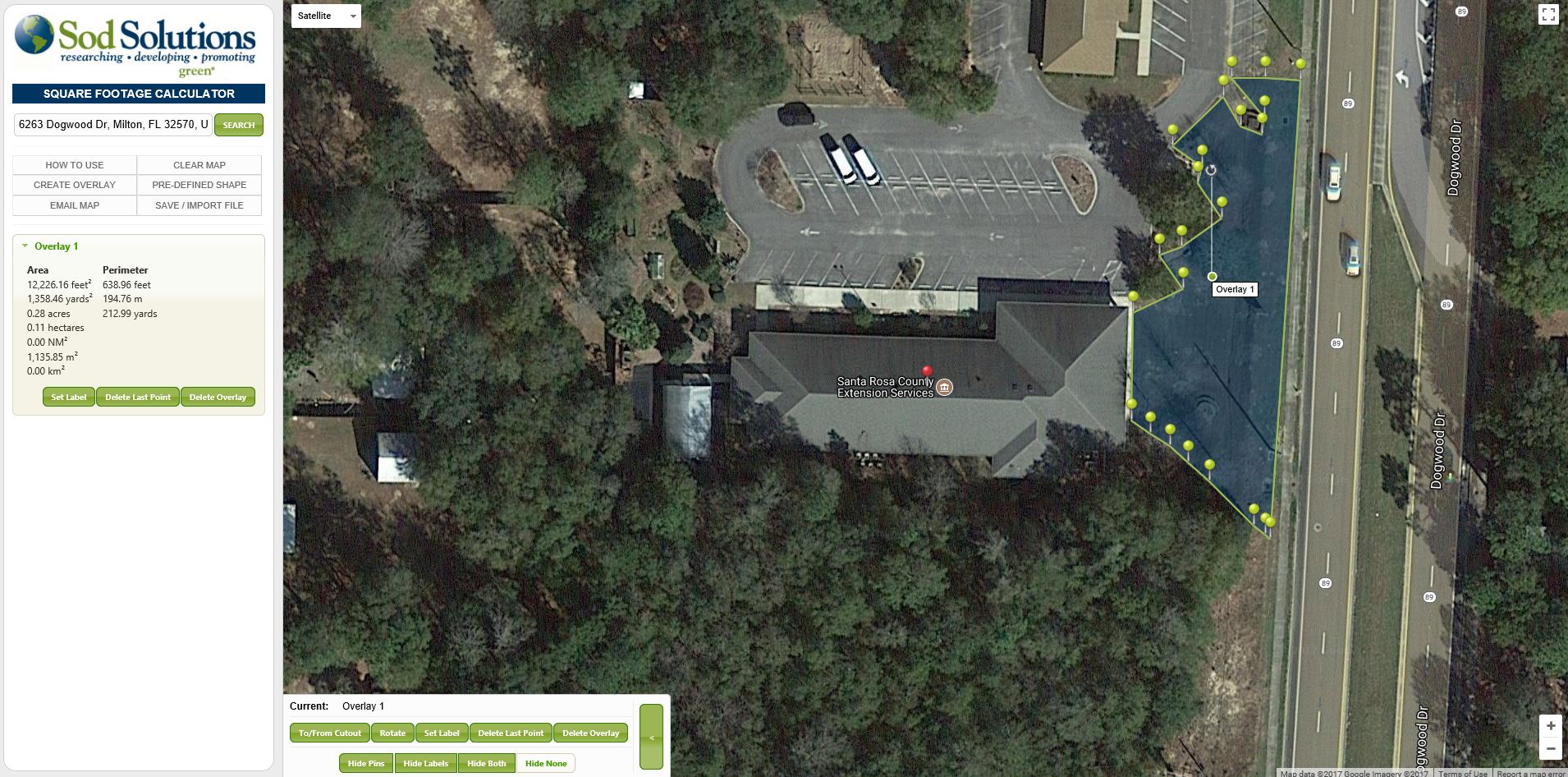
by Mary Salinas | Aug 25, 2017
After you have chosen the right fertilizer, fungicide, herbicide or insecticide to apply to your landscape, the question becomes: how much do I buy? Labels on these products will tell you how many square feet it will cover – so that leads to the next question: how many square feet of lawn do I have?
Here’s an easy way to determine your square footage. This online tool from Sod Solutions uses GIS mapping to figure it out from the comfort of your lounge chair.
On this front page, search for your address.

A bird’s eye view of your property comes up. Zoom in by using the + sign in the lower right corner of the screen.
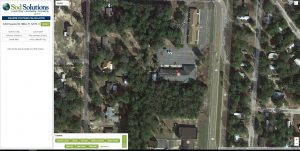
Plot points on the area you want to measure. This makes it so easy to measure those curved and odd-shaped areas!
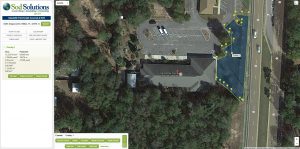
The calculation of the area in square feet, yards, and acres is displayed on the left side. The perimeter is also calculated; that might be handy for determining the length of a fence line.
For more information:
Your Florida Lawn website
The Florida Fertilizer Label
Interpreting Pesticide Label Wording
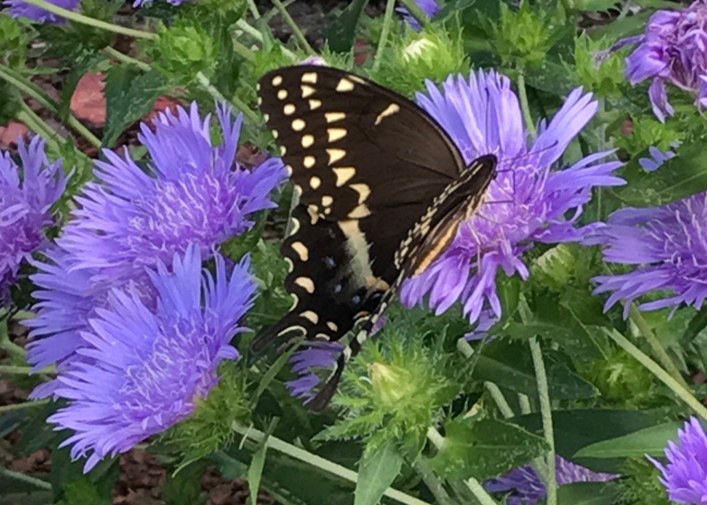
by Mary Salinas | Jun 22, 2017
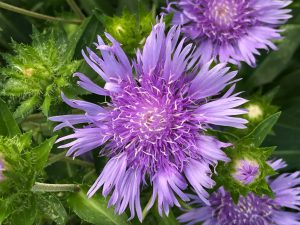
‘Mel’s Blue’ Stokes’ Aster. Photo credit: Mary Derrick, UF/IFAS Extension.
Florida is home to some of the most beautiful flowering perennials. An exceptional one for the panhandle landscape is Stokes’ aster (Stokesia laevis) as it is showy, deer resistant and easy to care for. Unlike other perennials, it generally is evergreen in our region so it provides interest all year.
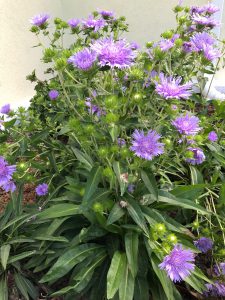
Upright habit and profuse blooming of ‘Mel’s Blue’ Stokes’ Aster. Photo credit: Mary Derrick, UF/IFAS Extension.
The original species of Stokes’ aster has purplish-blue flowers but cultivars have been developed with flowers in shades of white, yellow, rosy-pink and a deep blue. The flowers are large, eye-catching beauties that bloom in spring and summer. They also last well as a cut flower. You will find that bees and butterflies will appreciate their nectar! Remove spent flowers after blooms have faded in order to encourage repeat flowering.
A location in your landscape that provides part sun with well-drained rich soil is best for this perennial. Stokes’ aster is native to moist sites so it does best with regular moisture.
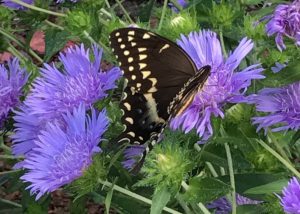
Stokes’ aster attracts butterflies like this black swallowtail. Photo credit: Mary Derrick, UF/IFAS Extension.
As with many perennials, the plant will form a large clump after a few years; this gives you the opportunity to divide the clump in the fall and spread it out in your landscape or share the joy with your gardening buddies.
For more information:
Gardening with Perennials in Florida
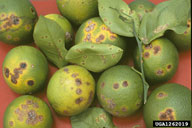
by Mary Salinas | May 11, 2017

Citrus canker symptoms on twigs, leaves and fruit. Photo by Timothy Schubert, FDACS
In November 2013, citrus canker was found for the first time in the Florida panhandle in Gulf Breeze in southern Santa Rosa County. The Florida Department of Agriculture and Consumer Services (FDACS) tested and confirmed the disease on grapefruit trees in a residential landscape. Since that time, citrus canker has been confirmed on citrus trees at 27 more locations in Gulf Breeze. To my knowledge it has not been found in any other location in the panhandle. Not yet.
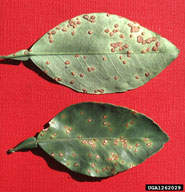
Citrus canker lesions on leaves are raised, rough and visible on both sides of the leaf. Photo by Timothy Shubert, FDACS.
Citrus canker is a serious bacterial disease that only infects citrus trees. It will not infect any other plant species nor is it a threat to human health. This highly contagious disease has no cure as yet. Severely affected trees experience substantial leaf and premature fruit drop and serve as a source for infecting other citrus in the area. The disease spreads through wind, rain and transportation of infected plant material from other locations.
We do not know how the disease came to infect trees in our region. The disease could have been spread through infected fruit or trees brought here from areas where the disease is established, such as central or south Florida.
What should you do if you suspect your citrus is infected with this disease?
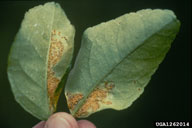
Citrus canker lesions can appear in the mines left by the citrus leafminer pest. Photo by Timothy Schubert, FDACS
- Look at Homeowner Fact Sheet: Citrus Canker for more information.
- Leave the tree in place in your yard and call the Division of Plant Industry at FDACS at 1-888-397-1517 for a free inspection and testing of your citrus trees.
- Consult your local Horticulture Extension Agent for more information and control/removal strategies.
- Proper removal of infected trees is recommended to prevent the spread of citrus canker but is not mandatory.
For more information please see:
Save Our Citrus Website
UF IFAS Gardening Solutions: Citrus
Citrus Culture in the Home Landscape
UF IFAS Extension Online Guide to Citrus Diseases
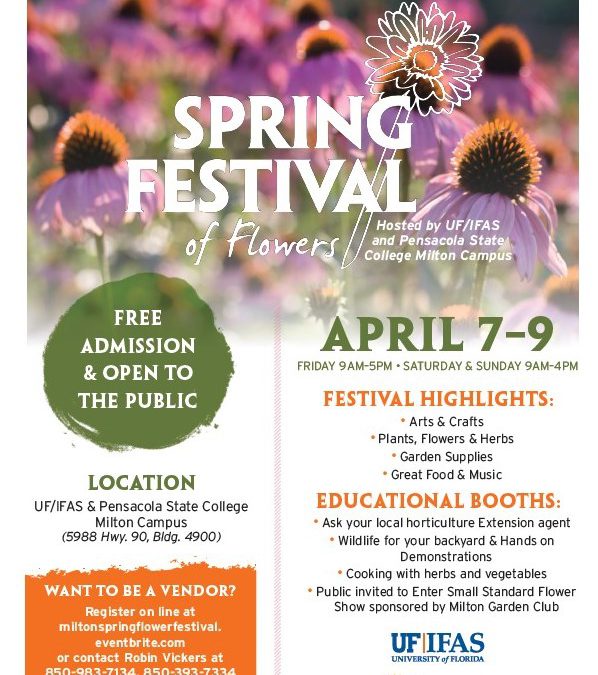
by Mary Salinas | Mar 20, 2017
About the Spring Festival of Flowers
The University of Florida, IFAS and the Pensacola State College Milton Campus invites you to join them for one of the largest festivals of the season. This is a popular event that draws plant enthusiast from near and far. This festival features plant nurseries, UF student club plant sale, arts & crafts, great food, music and educational opportunities.
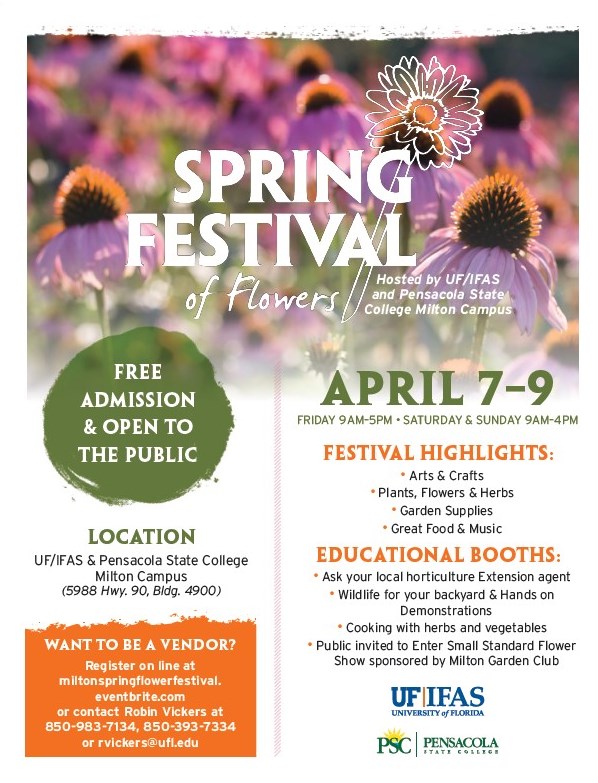
Location
University of Florida, IFAS and the Pensacola State College Milton Campus located at 5988 Highway 90, Milton.
Dates and Times
Friday, April 7, 2017 * 9 AM – 5 PM
Saturday, April 8, 2017 * 9 AM – 4 PM
Sunday, April 9, 2017 *9 AM – 4 PM
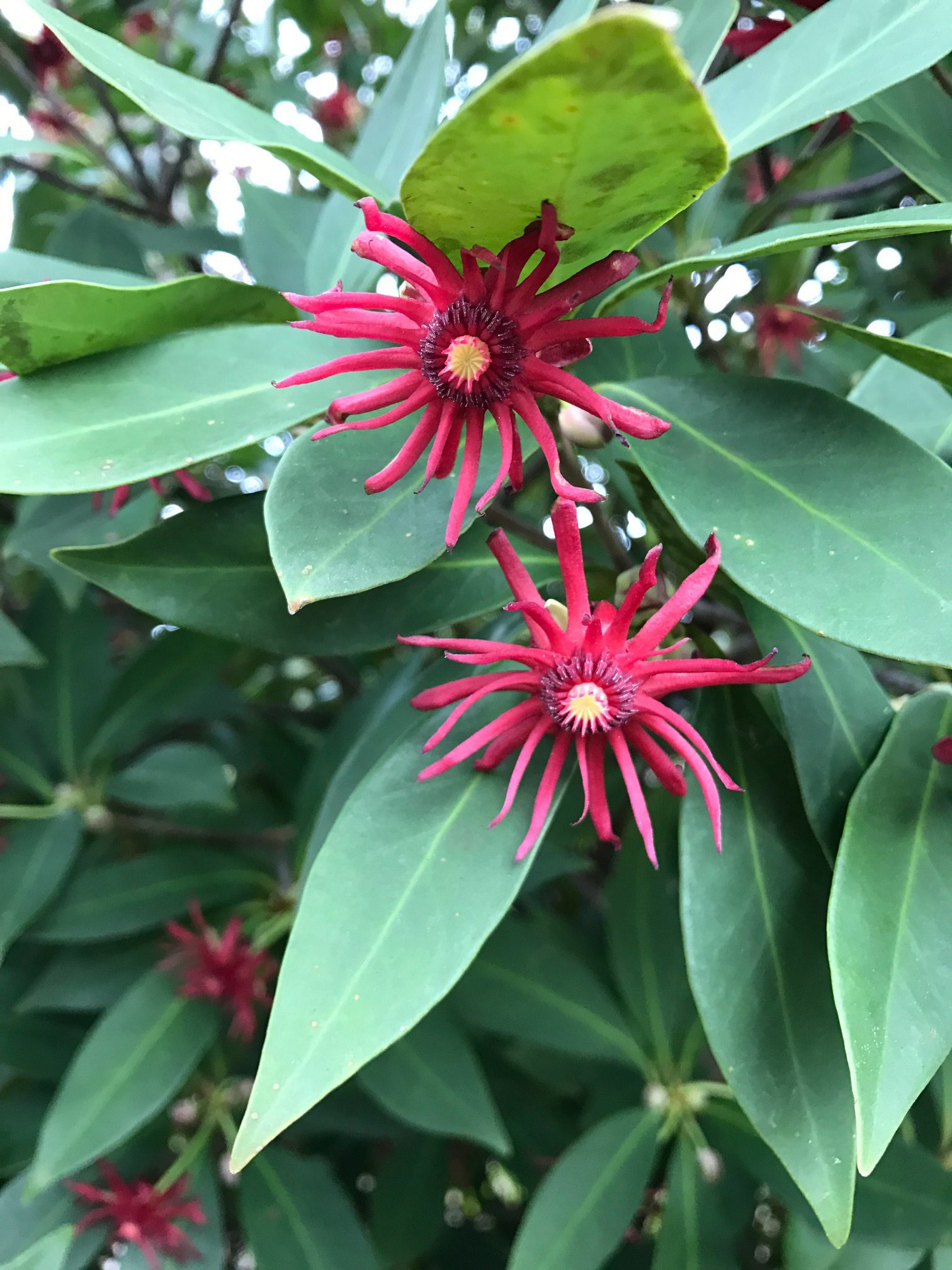
by Mary Salinas | Mar 9, 2017
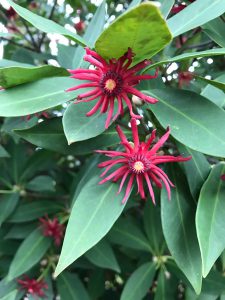
Dark red flowers of Florida red anise arrive in the springtime. Photo credit: Mary Derrick, UF/IFAS Extension.
Springtime brings small but very pretty red blooms on an outstanding native shrub/small tree, Florida red anise (Illicium floridanum). It occurs naturally in the wild in the central and western panhandle of Florida and west along the gulf coast into Louisiana. Its natural environment is in the understory along streams and in rich, wooded areas.
This is a great shrub for a part shade to shady and moist area in your landscape. The dense foliage, dark green leaves and the fact that it is evergreen all year makes it a great choice for an informal hedge. Plan for it to grow to a maximum height of 12 to 15 feet.
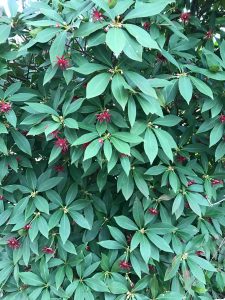
Dense growth habit of Florida red anise. Photo credit: Mary Derrick, UF/IFAS Extension.
The leaves have a licorice-like aroma when crushed but this is NOT the species that gives us the edible culinary anise. Maybe it is that aroma that makes this a relatively pest-free plant!
Yellow anise (Illicium parviflorum) is a very similar native shrub but has small yellow flowers and adapts better to a drier environment. The native range of the yellow anise is north central Florida.
















